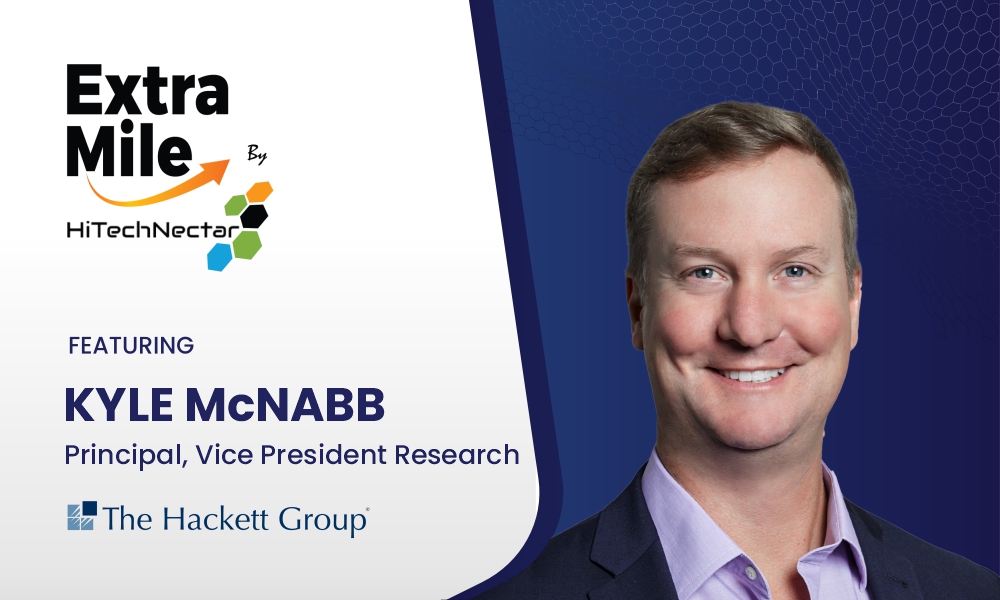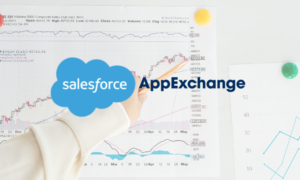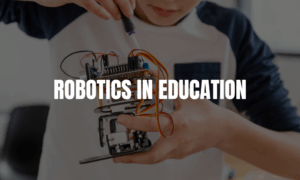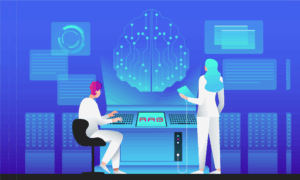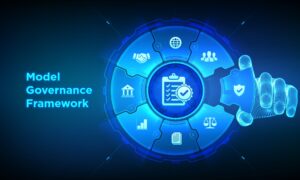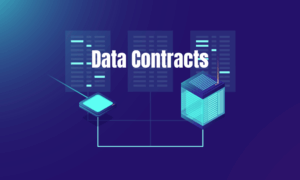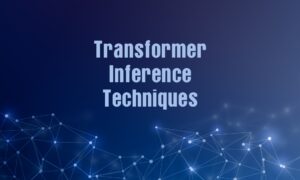Host: Hello everyone, welcome to the latest episode of Extra Mile by HiTechNectar, an interview series that bridges gap between industry leaders and enthusiasts. I’m your host, Sudakshina, and we are here to discuss the latest innovations, tech trends, marketing practices, expert insights, and a lot more. For today’s episode, we are glad to feature Kyle McNabb, the Vice President and Principal – Research at The Hackett Group.
The firm specializes in boosting organizational performance with Gen AI focused solutions. It empowers businesses to confidently and swiftly ideate, assess, establish and deploy AI. Let us explore more about The Hackett Group from one of the firm’s key contributors alongside discovering unmatched insights on generative AI, performance making and leadership.
We’re delighted to have you with us today, Mr. McNabb, welcome.
Kyle: Thank you.
Host: So, with multiple years of leadership, you have led several organizations to success. We would love to know more about your journey so far.
Kyle: My journey in particular, so I’ve spent roughly three years in the industry in a variety of roles, predominantly in the software engineering arena, in a variety of consulting, advisory, product leadership and marketing leadership positions. I joined The Hackett Group a little over a year ago in late March, early April of 2024 and now lead our research organization as we look to explore, as you kind of outlined, some of the key issues that organizations need to overcome if they’re going to re-imagine work in the workforce, leveraging new capability ranging from digital platforms all the way to today, the use of generative AI in agents.
Host: That’s really an exciting journey indeed. Your contributions and achievements are truly commendable. So next up, what is the significance of research in establishing and running a business, especially in the tech and IT field?
Kyle: Well, the importance of research is to help any organization understand what’s happening in the market that they don’t necessarily have visibility and insight into. The way I like to describe it is for most executives, be them a CIO or a CFO, they’re very much focused on the here and now. They’re dealing with their organizations, their teams, their immediate stakeholders, and research is a good complement to that because it offers them up visibility and insights of what’s happening outside of their organizations, insights into best practices that these leaders may not be aware of, insights into new trends that maybe they’re not aware of as well.
And what we do in particular is we have a very large focus on performance. So, we don’t just look at general trends that take place in the technology industry or general trends that might take place in a given functional area, such as finance. We’re very much focused on performance.Our research actually starts with a grounding and understanding of what good performance looks like. We’ve benchmarked it, and we continue to benchmark it today with hundreds of organizations. And then our research builds upon that to really explore how organizations really do establish performance advantage in a process or in a functional area or in an entire business unit and how they establish performance advantage through the usage of digital and generative AI and agentic AI capability.
So, the research that we do right now is really largely focused on exploring those challenges and issues related to how organizations are truly establishing those advantages. And all that insight is then available to our customers, our prospects to really give them a better understanding of what’s possible, what other organizations are doing, and what they might do differently in order to develop some new performance advantage of their own.
Host: Research opens the door to understanding complex easily. In today’s world, with swiftly changing market needs, how important is it to stay agile? How do you go to the marketing strategies work in this regard?
Kyle: You need not look beyond just the current state of the economic environment globally today to really get a good feel for why organizations need to be agile and responsive. Things change like that in today’s market. Here in the United States, we’ve got a U.S. administration that’s about to introduce a whole bunch of tariffs. That causes a bunch of economic disruption in the market. When you have other changes in policies, when it might relate to the usage of personal information, be it in the European Union or in India or in China or even here in the United States, that changes consumer expectations as well. And so, the real need to be agile is a direct reflection of just how volatile and uncertain today’s market is.
And so, organizations really need to build in what I would say both agility and resiliency into the way they work and the way they engage with different stakeholders so that they can meet their customers, meet their prospects, and meet others where they are based on the current market conditions. Incredibly effective to do this in marketing because, again, trends and topics change every day. Those changes impact buyer decisions and buyer behaviors.
They impact the behaviors of influencers as well. And so you can’t really set an expectation that any decision you’ve set today, be it for a go-to-market campaign, be it for a business strategy, even for hiring plans inside of an organization, you can’t really set an expectation that the decisions you make today are still going to be the right decisions six months from now, let alone six weeks from now. And so a lot of what we uncover in our research is more of those drivers to really help an organization understand why you need to build in agility and also resiliency into the way you work into your operating model.
Because with current events, there are factors that are going to change and reshape the decisions you make and the strategies you set on a fairly regular basis. And so, you can’t be too rigid in how you want to execute.
Host: Agility and flexibility are the key keys to making progress in the evolving commercial setup. Approaching further, with the revolutionary capability of GNI, how do you think it has redefined business operations with more efficiency?
Kyle: Oh, well, it’s a great question. And I think it’s evolved operations beyond just efficiency. So, with our focus on performance, we have a very good understanding, again, because we’ve benchmarked it and we’ve identified best practices around it, of what good performance looks like.
And we do that by functional areas, by process areas, across front office, mid office and back office. A lot of the usage of technology over the past probably decade has been on standardizing processes on a particular platform or stack to help improve performance, to help streamline and help automate performance. And it’s led to some pretty good results.
You can see it in the data that we have that transactional costs and transactional head count inside organizations have steadily declined over the past 10 years. The counter to that, not necessarily the counter, but the derivative of that is for a lot of the organizations that are establishing and have established performance advantage, they’ve invested more in value add, capabilities and value add resources. So they’ve kind of moved away from transactional support.
So this is more like the administrative support you might find in the help desk or in accounts payable or even in a sales environment. And they’ve invested more in higher value roles, analytical roles, more knowledge roles that they have. And to date, or at least until 2022, when the first real large language models really came to the commercial market, those roles had largely been, what I would say, underrepresented in the technology landscape.
Did they use technology? Yes. But they didn’t use technology to really reimagine what they did, how they create content, how they make decisions.
Other examples out there, the usage of AI for predictive modeling and so on has had an impact. But what we see right now with generative AI and the emergence of these large language models and what you can do with them, it’s really opening up great avenues to those new value add roles, the more creative roles, the decision-making roles, be them in even your R&D organization. So if you’re a pharmaceutical and you’ve got an R&D group that’s working on the next drug discovery, there’s more capability for those roles now to help them not just be more effective at what they do, but we’re actually finding examples where organizations can frankly reimagine what these roles do.
And they can use generative AI in many cases to assist these workers in some of the day-to-day things that they do to take action, to make decisions. They can use it to augment what these workers do and work alongside with them to elevate issues that might need their attention, to direct them to information that they might need to make a decision. We’re also seeing increasing examples where gen AI is being turned into agents that are fully autonomous and taking action and making decisions that some of these knowledge workers might have done in the past.
Now, the benefit there is for an organization, again, they can reimagine working in the workforce and they can free up those typically higher cost, more strategic resources to go do other actions and make other decisions. So you’re seeing a usage of generative AI in particular to support these workers, not to replace, but to support these workers and help them not just be more effective at what they do, but actually put them into positions where they can go take on tasks and challenges that the enterprise didn’t anticipate they’d be able to do. But now that they’ve got capability that increasingly can do higher level math, including PhD level math, which is pretty impressive.
You can now begin to look at how do I free up more of my value-added resources to focus more on not just being effective, but to go focus more maybe on quality, to maybe focus on other outcomes, such as how do we enter our new market? So it’s not just about being effective as what they do, but they’re actually looking a little bit more closely at how do we get our people in the workforce into areas that help us build more differentiated capability and advantage.
Host: Yeah, it’s one of the most exciting innovations that has transformed businesses operations, definitely. So moving ahead, why is the performance tracking and evaluation crucial for any strategy within an organization, and how do you set KPIs for performance tracking?
Kyle: Oh, so let me start with the latter. So we set KPIs. Again, part of our heritage is we’re a benchmark firm, and so we’ve worked closely with enterprises for the past 30 years to really take a close look at what metrics do matter inside a given functional area or process.
So in the case of procurement, we can look at a variety of cost metrics. We can look at a variety of ROI metrics. In the world of finance, we can take a close look at the metrics related to working capital.
In HR, we take a look at a number of metrics that are related to employee experience and employee engagement. In sales and marketing, it’s really looking closely at what I would say the metrics that do matter. These are the things that typically an organization puts onto a dashboard or to a balance scorecard to put in front of their senior leadership or their executive leadership or even their board.
And so the metrics that we have are based around that. So the good news that I tell a lot of organizations today is they don’t need to come up with new metrics and KPIs. They’re out there.
What they need to do is identify the ones that matter the most to them and begin to build their reporting and analytics around what are the activities and so on that lead to those KPIs. And we have the best practices to do so. So again, a lot of our research is based on our benchmarking and best practices related to it.
And it’s not uncommon for us to walk into an organization to say, let’s take a look at what are you measuring today. And we’ll quickly identify that they’re not measuring things based on best practice. They’re measuring things that aren’t necessarily related to a final outcome that they’re trying to deliver.
Maybe they’re a little bit too focused on what I would say mundane productivity metrics that don’t really lead to an effective set of decision making or actions to take. And so we kind of start there. The metrics that matter are the ones that you would want to make decisions on that would drive action around.
And in the world with generative AI, the metrics don’t necessarily, they haven’t really changed yet. The measures behind them have changed dramatically. We’ve got cases where through the usage of generative AI and agents, you might see, you know, in some cases, 20 percent improvement to some of the metrics.
And that’s fairly common today, especially when you’re using something like a Microsoft Copilot or a ChatGPT for some productivity support. But we’re also seeing in some cases where maybe it’s related to customer engagement or when it comes into a new product introduction type process area where the gains on some of these metrics is transformative. You know, it’s 40 percent or more.
We’ve actually got a few examples as well where the gains have been exponential in the metrics. So you’ve actually seen, if they were operating at, you know, whatever percentage they were operating at, they’ve seen an exponential improvement to that, an order of magnitude improvement to those metrics. But there hasn’t really been, you know, new metrics from an operational standpoint, you know, that have materialized.
What has really materialized is just a, you know, complete reimagining of what you can do behind those metrics into the processes and the work that support those metrics. And we’re seeing some incredible results, again, from what I would say, simple incremental improvements, 20 percent improvement in productivity, et cetera, through to exponential gains into revenue growth or customer satisfaction in other areas. But again, it’s all based on taking a close look at what really are the metrics and the outcomes that do matter.
Host: It’s obviously important to know how a strategy is performing for better decision making. So next up, what does digital world class performance mean and how do companies achieve such performance?
Kyle: Well, so digital world class is our labeling of organizations that excel on those performance metrics. And we take a look at it from a two by two matrix, if you will. We take a close look at how organizations establish performance advantage and what other supporting metrics when it comes to business value are related to those outcomes or to those key measures, as well as their operational effectiveness.
And so when we take a look at the combination of those metrics, we can clearly see basically it’s a line that you would see in a lot of the data that we have in this kind of two by two matrix. On the lower end, you see organizations that really struggle at establishing any real performance advantage and gain. And it’s often because they haven’t figured out how do they deliver better business value to their internal or external stakeholders.
And you also take a look at their operational effectiveness and they’re still trying to figure it out. They don’t have the right amount of automation in place or maybe they’re overtaxed when it comes to too many transactional resources. They haven’t really revisited with technology.
On the upper right of the matrix that we have are the world-class organizations. And they are establishing performance advantage. It could be higher revenue per employee.
It could be total lower technology costs per employee while still delivering great outcomes when it comes to margin contribution and revenue contribution. But they also score very high on their ability to deliver business value to their internal and external stakeholders. And they are really, really effective at what they do.
So, there’s a high degree of automation. There’s a high degree of being able to deliver high service levels, again, to internal and external stakeholders. And so when we look at establishing that world-class categorization, we look at the upper quartile of the data set that we have.
And the upper quartile are those that do excel on that business value and operational excellence while still delivering some incredible advantage into their top-line metrics. Those define world-class. And then what we do from there is we really spend a lot of our time trying to understand, how did they get there?
What did they do differently? How did they change their operating model? How did they reshape the way they make decisions as well in order to create that advantage?
But world-class is that upper quartile that we take a look at. It’s the top 25%. It’s the top of the top that we’ve got.
And we can back it up with the outsized advantages they have on some of the metrics that we keep tabs on and take a close look at on an annual basis.
Host: Really amazing to learn how these new concepts that have redefined the world businesses operate. Shifting our focus to the Hackett Group solutions, give us an overview of the Hackett Group’s AI, Excel, PR, and Z-Brain. How do these tools assist businesses in untying the complemency of Gen-AI?
Kyle: So let me start with our AI Explorer capability. One way that I would describe it is, what I mentioned earlier before, you know, the usage of generative AI to address roles that have been invested in over the past few years. The more knowledge work, you know, the more, you know, the thinkers, you know, the roles that are really focused on, you know, making strategic decisions and taking actions from that.
Explorer is actually the usage of AI capability, generative AI capability, to assist, you know, senior leaders in developing what their opportunity portfolio can and should look like when it comes to the usage of AI in their organization. Again, be it front office, mid office, or back office. AI Explorer is our proprietary capability that actually puts technology to use for your senior leaders and their teams that are looking across the enterprise and saying, we’ve got thousands and thousands of ideas and use cases where we might potentially use generative AI and agents, but we don’t know exactly which ones to prioritize because we don’t necessarily understand the impact or the value that these can deliver. And some of that is because, you know, you’re now looking at knowledge work areas that are poorly understood by senior leadership.
You know, these are areas that it’s difficult really to kind of quantify in some cases. You know, a productivity game because the work necessarily isn’t well understood, but through the use of AI capability that we have in AI Explorer, we can assist a CIO in her team or a CFO in her team or the entire executive team that’s looking at what can we do with AI inside the organization, and we can help them quickly, and I mean like within minutes to an hour, get a really good understanding of what their opportunity potential looks like, where should they be focusing their energy and efforts to realize more than just an incremental productivity improvement, but where might they actually look for something more transformative or something more breakthrough, you know, that exponential return, you know, I highlighted before. And AI Explorer is basically our, it’s part of the brain that we can bring to the table to help that senior leadership team really understand what their opportunity potential looks like so that they can then take the next step and say, this is the area that we want to go explore, this is the area that we want to go invest in to reimagine work and to frankly reimagine the outcomes that they can deliver to their internal and external stakeholders.
Z-brain, Z-brain, is our orchestration platform. So for an organization that has actually made the decision to say, we’re going to implement generative AI and agents and other capability to go reimagine, you know, a process and the workflow behind that process, Z-brain is our orchestration capability set that allows the organization to quickly build or point to and connect to, you know, the agents, generative AI, predictive AI, you know, and so on, that support that work. And so it actually allows you to orchestrate how that workflow should look, how it should execute, when it should kick out exceptions to employees, when the human needs to be in the loop on decision making. But it’s an orchestration environment that actually helps you move from the idea that AI Explorer gives you of saying you need to go pursue breakthrough advantage in this process in this work area.
Z-brain is there to actually help you implement and orchestrate the AI capability behind that process and those workflows to help you go realize, you know, that breakthrough performance.
Host: Truly valuable insights. Not only businesses, but also professionals need to be adaptable to progress in the competitive industry.
Thank you very much, Kyle, for giving us your time and sharing your wisdom, your knowledge on diverse areas of industry and tech advancements is indeed precious to us.
You highlighted a few critical aspects of generative AI organization and agility, continuous learning and others, which let enhanced our understanding of this emerging technologies and methods. Thank you very much, Kyle.
Kyle: Thank you.
Host: Thanks for joining us today. I am Sudakshina, your host, signing off. Catch us next time on ExtraMile by HiTechNectar for another insightful episode with our next visionary leader.
Stay tuned.
Explore Our Other Insightful Interviews:
